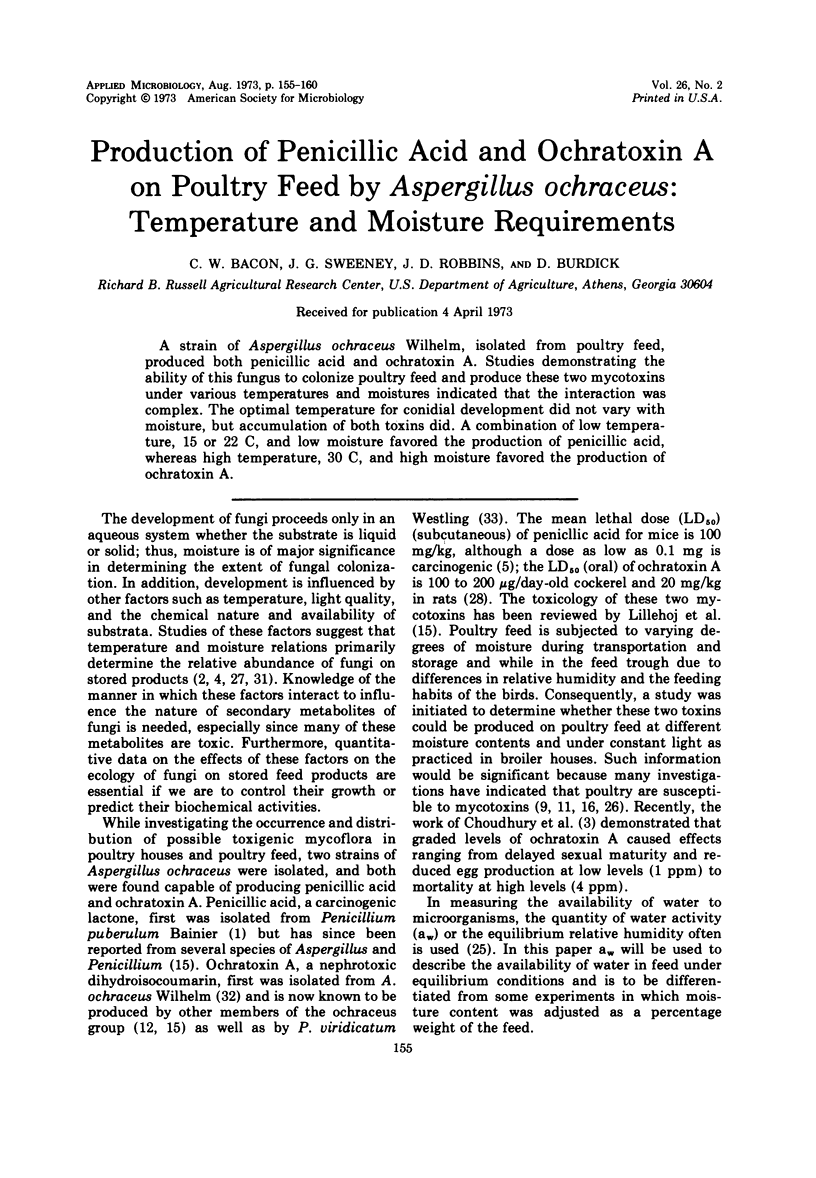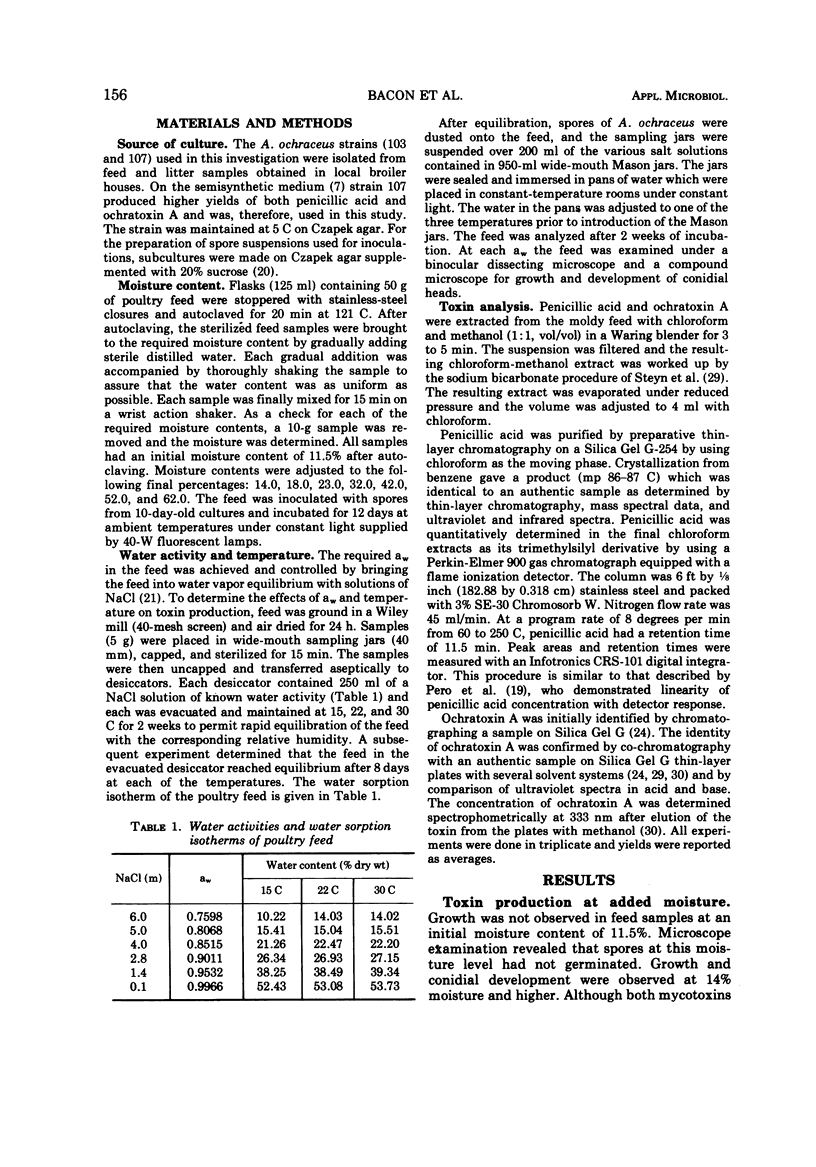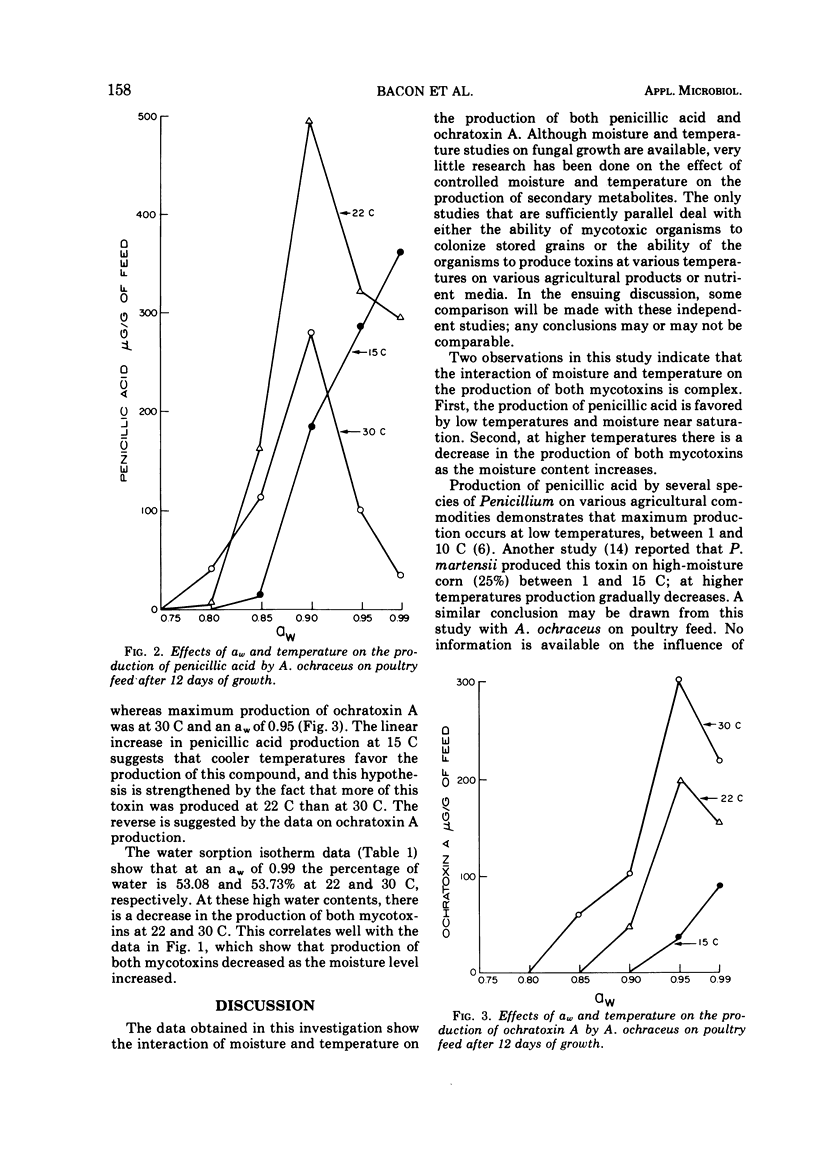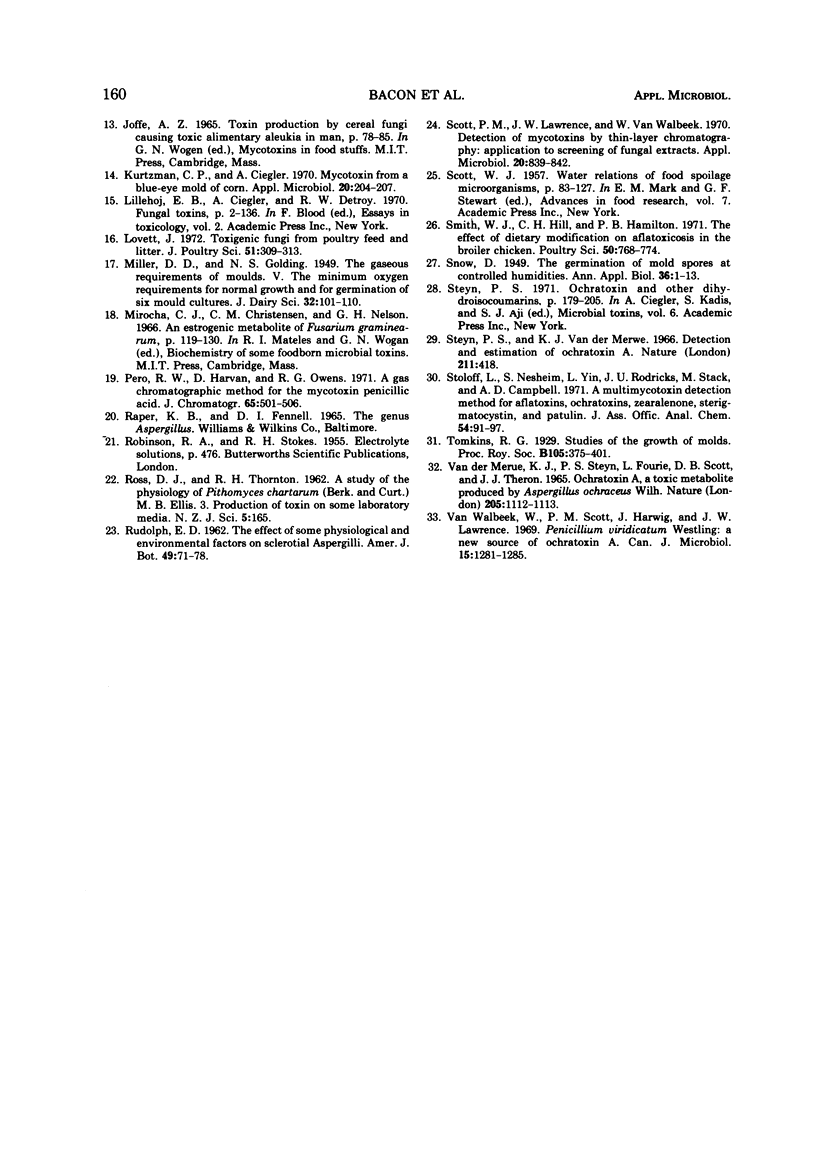Abstract
A strain of Aspergillus ochraceus Wilhelm, isolated from poultry feed, produced both penicillic acid and ochratoxin A. Studies demonstrating the ability of this fungus to colonize poultry feed and produce these two mycotoxins under various temperatures and moistures indicated that the interaction was complex. The optimal temperature for conidial development did not vary with moisture, but accumulation of both toxins did. A combination of low temperature, 15 or 22 C, and low moisture favored the production of penicillic acid, whereas high temperature, 30 C, and high moisture favored the production of ochratoxin A.
Full text
PDF





Selected References
These references are in PubMed. This may not be the complete list of references from this article.
- Choudhurv H., Carlson C. W., Semeniuk G. A study of ochratoxin toxicity in hens. Poult Sci. 1971 Nov;50(6):1855–1859. doi: 10.3382/ps.0501855. [DOI] [PubMed] [Google Scholar]
- Ciegler A., Kurtzman C. P. Penicillic acid production by blue-eye fungi on various agricultural commodities. Appl Microbiol. 1970 Nov;20(5):761–764. doi: 10.1128/am.20.5.761-764.1970. [DOI] [PMC free article] [PubMed] [Google Scholar]
- Davis N. D., Searcy J. W., Diener U. L. Production of ochratoxin A by Aspergillus ochraceus in a semisynthetic medium. Appl Microbiol. 1969 May;17(5):742–744. doi: 10.1128/am.17.5.742-744.1969. [DOI] [PMC free article] [PubMed] [Google Scholar]
- Hamilton P. B. A natural and extremely severe occurrence of aflatoxicosis in laying hens. Poult Sci. 1971 Nov;50(6):1880–1882. doi: 10.3382/ps.0501880. [DOI] [PubMed] [Google Scholar]
- Hesseltine C. W., Vandegraft E. E., Fennell D. I., Smith M. L., Shotwell O. L. Aspergilli as ochratoxin producers. Mycologia. 1972 May-Jun;64(3):539–550. [PubMed] [Google Scholar]
- Kurtzman C. P., Ciegler A. Mycotoxin from a blue-eye mold of corn. Appl Microbiol. 1970 Aug;20(2):204–207. doi: 10.1128/am.20.2.204-207.1970. [DOI] [PMC free article] [PubMed] [Google Scholar]
- Lovett J. Toxigenic fungi from poultry feed and litter. Poult Sci. 1972 Jan;51(1):309–313. doi: 10.3382/ps.0510309. [DOI] [PubMed] [Google Scholar]
- Pero R. W., Harvan D., Owens R. G., Snow J. P. A gas chromatographic method for the mycotoxin penicillic acid. J Chromatogr. 1972 Mar 1;65(3):501–506. doi: 10.1016/s0021-9673(00)84996-1. [DOI] [PubMed] [Google Scholar]
- Scott P. M., Lawrence J. W., van Walbeek W. Detection of mycotoxins by thin-layer chromatography: application to screening of fungal extracts. Appl Microbiol. 1970 Nov;20(5):839–842. doi: 10.1128/am.20.5.839-842.1970. [DOI] [PMC free article] [PubMed] [Google Scholar]
- Smith J. W., Hill C. H., Hamilton P. B. The effect of dietary modifications on aflatoxicosis in the broiler chicken. Poult Sci. 1971 May;50(3):768–774. doi: 10.3382/ps.0500768. [DOI] [PubMed] [Google Scholar]
- Steyn P. S., Merwe K. J. Detection and estimation of ochratoxin A. Nature. 1966 Jul 23;211(5047):418–418. doi: 10.1038/211418a0. [DOI] [PubMed] [Google Scholar]
- Stoloff L., Nesheim S., Yin L., Rodricks J. V., Stack M., Campbell A. D. A multimycotoxin detection method for aflatoxins, ochratoxins, zearalenone, sterigmatocystin, and patulin. J Assoc Off Anal Chem. 1971 Jan;54(1):91–97. [PubMed] [Google Scholar]
- van Walbeek W., Scott P. M., Harwig J., Lawrence J. W. Penicillium viridicatum Westling: a new source of ochratoxin A. Can J Microbiol. 1969 Nov;15(11):1281–1285. doi: 10.1139/m69-232. [DOI] [PubMed] [Google Scholar]
- van der Merwe K. J., Steyn P. S., Fourie L., Scott D. B., Theron J. J. Ochratoxin A, a toxic metabolite produced by Aspergillus ochraceus Wilh. Nature. 1965 Mar 13;205(976):1112–1113. doi: 10.1038/2051112a0. [DOI] [PubMed] [Google Scholar]


